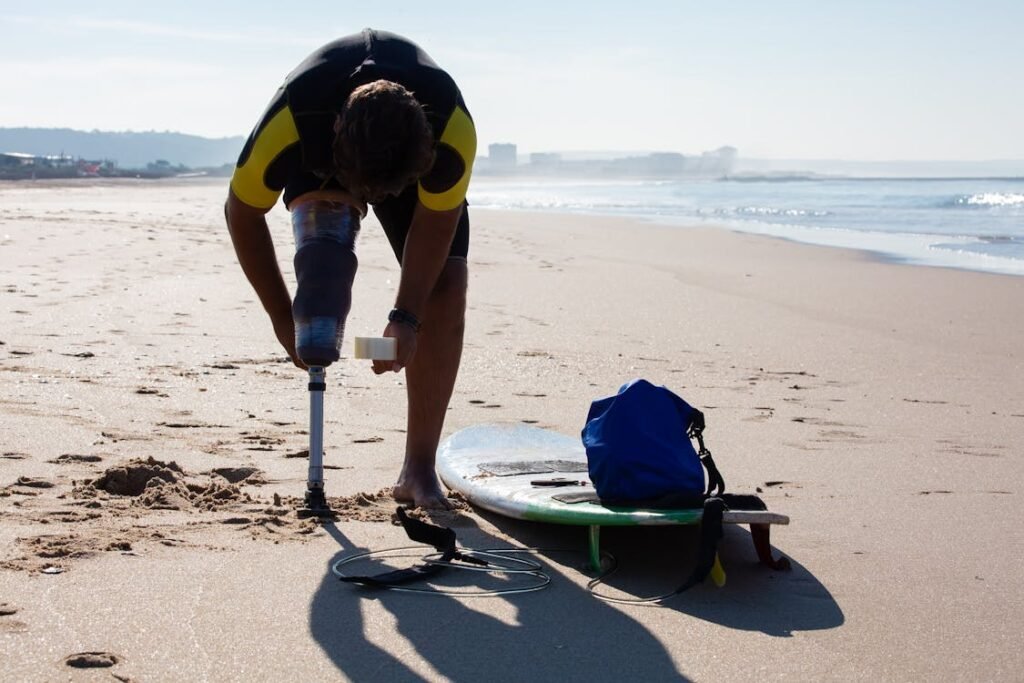When a child undergoes an amputation, it changes everything—for them, and for their family. From learning to walk again to rebuilding confidence, the road ahead can feel overwhelming. But there’s one decision that can make a dramatic difference in that journey: fitting a prosthetic as early as it’s safely possible.
Timely prosthetic fitting isn’t just about mobility. It affects how children grow, develop, interact, and even how they view themselves. At Robobionics, we’ve supported many pediatric amputees across India. And one thing we know for certain—waiting too long to fit a prosthesis can set a child back physically, mentally, and emotionally.
Let’s walk through the real, evidence-backed reasons why early fitting is not just helpful, but vital for a child’s growth and independence.
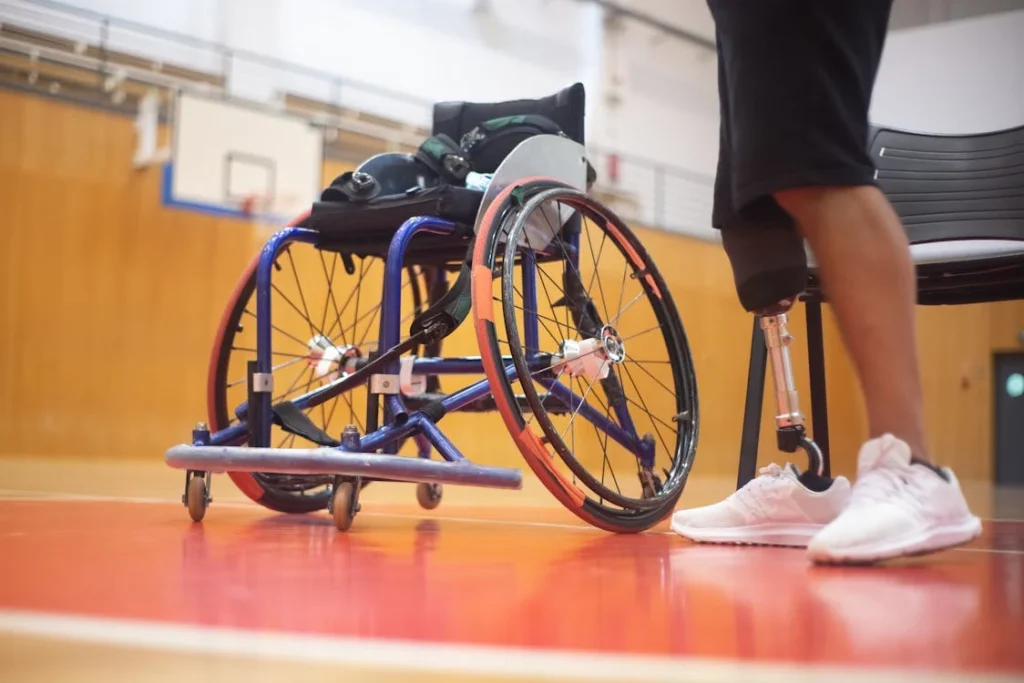
Supporting Physical Growth With Early Fitting
The Body Needs the Right Signals to Grow Properly
A child’s body is like a sponge—ready to absorb, adapt, and evolve. But it also needs the right inputs to grow the right way. When a limb is lost, especially at a young age, the body’s natural symmetry is disrupted.
Muscles and bones on the amputated side no longer work the same way, and over time, this lack of movement affects how a child’s entire body develops.
One of the main issues we see with delayed fitting is uneven growth. For instance, if a child has a leg amputation and doesn’t receive a prosthetic early on, the unaffected leg often becomes stronger and longer simply because it’s used more.
Meanwhile, the residual limb doesn’t bear weight or move much, and the muscles around it weaken. This imbalance can affect the spine, hips, and even posture over time.
But when a prosthetic is introduced early—especially one that’s designed for growth—the body is encouraged to stay in balance. Weight is distributed more evenly. The muscles on both sides of the body remain active.
And because the child is moving more naturally, their bones receive the pressure and resistance needed to grow correctly. This process is called “mechanical stimulation,” and it’s critical for healthy bone development.
Even the residual limb benefits from early weight-bearing. It helps shape the limb properly and prevents it from growing in odd angles or becoming underdeveloped.
When a limb doesn’t get stimulation, the bones and tissues might grow in unpredictable ways, which can make it harder to fit a prosthetic later.
There’s also the issue of joint contractures—when joints become stuck because they’re not being used. Without early fitting, children are more likely to develop stiffness in their knees, hips, or shoulders, depending on the level of amputation.
These contractures can be painful and may require surgery later in life. But early prosthetic use helps keep joints mobile and healthy.
So what does this all mean in plain words? If you want your child to grow in a balanced, natural way, you need to keep their body moving as early and as safely as possible. A timely prosthetic fitting doesn’t just help with walking—it helps with growing up strong and well-aligned.
Improving Mobility and Coordination in the Developmental Window
The Sooner a Child Moves, the Better They Learn to Move
There’s a critical time in every child’s life when they learn how to crawl, stand, walk, and run. These stages of movement don’t just happen—they are learned behaviors. And like any skill, the earlier you start, the better you become.
In children with limb loss, the ability to move freely depends on having access to a prosthetic during this learning window. When that prosthetic is delayed, the child misses out on vital stages of development.
They may crawl longer than usual, avoid standing, or skip walking altogether. These skipped steps aren’t just delays—they can lead to long-term problems with coordination, balance, and body awareness.
Let’s say a child learns to walk using only one leg or crawls in a way that puts more strain on their arms and back. That child will likely grow up with muscle imbalances.
Their gait may be uneven. They might rely too heavily on crutches or wheelchairs, even when a prosthetic could have helped them walk independently.
But when a child is fitted early, especially during that golden period of early motor development, they begin to learn how to use their prosthetic as part of their body.
They build muscle memory around it. They learn how to balance on two sides. And most importantly, they feel like the prosthetic is “theirs”—not a foreign object, but an extension of themselves.
Coordination improves too. Children who start moving with a prosthetic at an early age tend to have better rhythm, timing, and reflexes. They learn how to run, jump, and play in ways that children who were fitted late often struggle to achieve.
We’ve seen children who received a prosthetic within weeks of surgery begin to walk naturally within months. Not because they were forced to, but because movement felt normal to them.
That’s the power of early exposure—it removes fear, it removes awkwardness, and it opens the door to confident, lifelong mobility.
And it’s not just about walking. Movement includes every part of a child’s daily routine—getting out of bed, using the toilet, reaching for a toy, hugging a friend.
Early fitting makes these actions easier, more natural, and more empowering. When kids move early, they develop independence. And when they move well, they feel free.
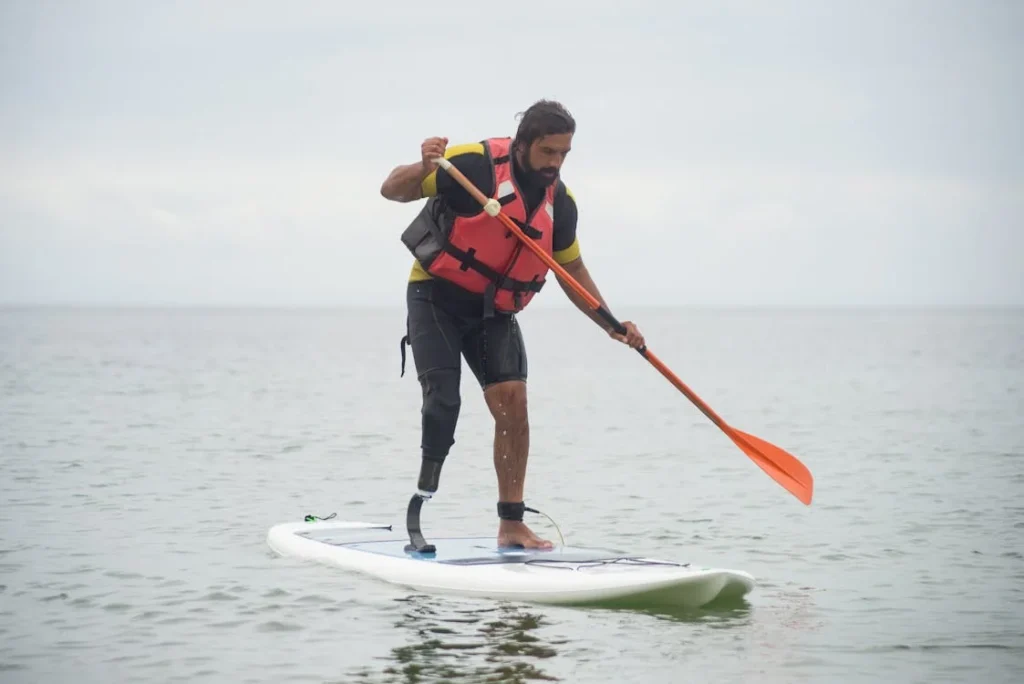
Boosting Confidence and Emotional Resilience
How Early Mobility Translates to Stronger Mental Health
Children are incredibly aware of how they’re different—even if they never say it out loud. From a young age, they compare themselves to others.
They watch their friends run across the playground, use both hands to draw, or ride a bicycle. When they can’t do the same, they notice. And unless we intervene with the right support—like timely prosthetic fitting—that awareness can grow into self-doubt or even shame.
One of the most powerful ways to support a child’s emotional health after amputation is by helping them regain control over their body. A prosthetic fitted early gives that control back.
It tells the child, “You can still do this. You’re still capable.” That message, especially when reinforced by parents and caregivers, becomes the root of confidence.
We’ve worked with families where children fitted early developed not just physical independence, but emotional strength. These kids learned how to walk, play, and explore with their prosthesis—and soon, they stopped thinking about the limb they lost. They focused instead on what they could do.
The emotional benefits aren’t limited to the child either. Parents often struggle with guilt, fear, or anxiety after their child loses a limb. They worry about their future.
They wonder if their child will be bullied or left behind. But when they see their child moving, smiling, and playing again—thanks to early fitting—it lifts that emotional weight.
Children who receive prosthetics early are also more likely to accept their limb difference as a part of who they are. They don’t see it as something to hide.
They get used to wearing their device, to answering questions from friends, and even to showing others how it works. That kind of openness reduces stigma and builds self-esteem.
And when it comes to social inclusion, nothing builds confidence like participation. Whether it’s joining a school game, dancing at a function, or simply walking hand-in-hand with friends—mobility creates moments of belonging.
Early fitting makes these moments possible. It brings the child back into the world—not as a patient, but as a participant.
Preventing Long-Term Complications Through Early Movement
What Happens When You Wait Too Long
We often hear parents say, “Let’s wait until the child’s limb heals more,” or “We’ll see how they adjust before trying a prosthetic.” While it’s natural to be cautious, waiting too long can cause complications that are much harder to fix later.
When a child doesn’t receive a prosthetic early, their body learns to compensate. That compensation might look like hopping, leaning, crawling on one side, or relying entirely on assistive devices.
While these strategies work in the short term, they put abnormal stress on other parts of the body. Over time, this leads to overuse injuries in the remaining limb, joint misalignment, and chronic pain.
Even the spine can be affected. Children who grow up with uneven weight distribution often develop scoliosis or other postural disorders.
These issues aren’t always visible at first, but they become harder to correct as the child grows older. By the time they’re teenagers, these misalignments can affect breathing, digestion, and overall energy levels.
Another problem is muscle atrophy. The muscles surrounding the residual limb, if not engaged early, weaken significantly. This not only affects mobility, but also makes prosthetic fitting more difficult.
The weaker the limb, the harder it is to support a socket comfortably. And once a muscle has wasted away, rebuilding it takes far more effort—and often years of therapy.
We also see more skin issues in children who are fitted late. Their residual limb may not have adapted to pressure or friction, making it more prone to blisters or sores.
Early fitting, on the other hand, allows for gradual exposure. The skin toughens up slowly and safely, reducing the chance of future injuries.
In essence, early fitting prevents the domino effect. One delay often leads to another. A lack of movement leads to weakness, which leads to poor alignment, which then leads to pain or reduced activity. But starting early breaks that cycle before it begins.
Children are built to move. Their bodies thrive on action. Waiting too long interrupts that natural rhythm—and the consequences can last a lifetime.
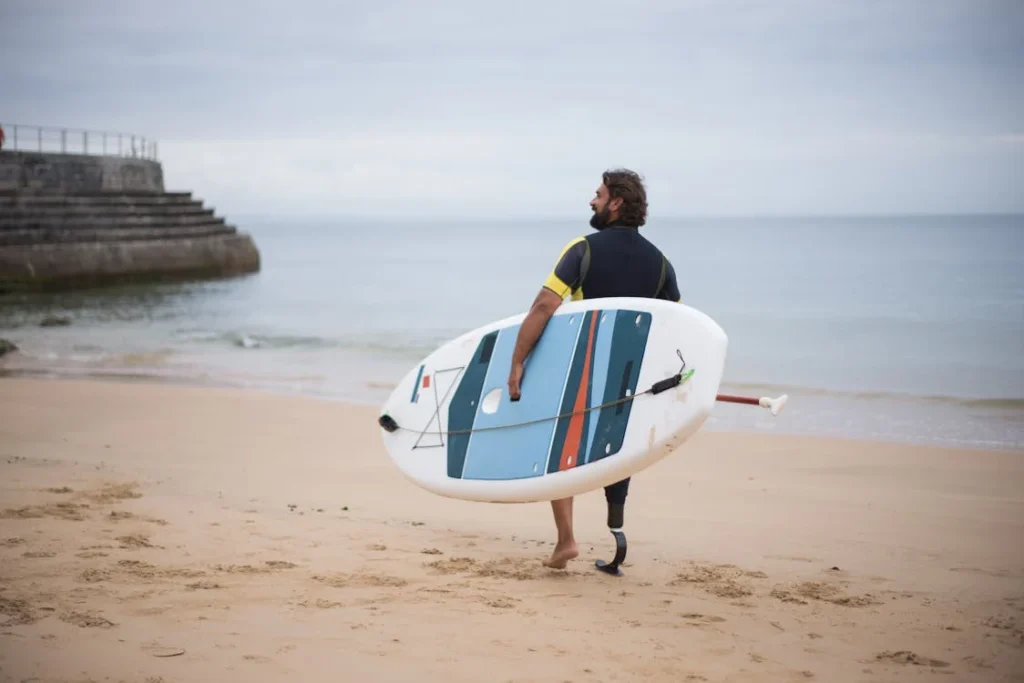
Helping Children Succeed in School With Early Fitting
Mobility, Inclusion, and Learning Go Hand in Hand
For any child, school is more than just a place to learn—it’s a place to explore identity, build friendships, and practice independence. When a child has undergone an amputation, returning to school is a critical milestone.
But whether that return is empowering or isolating often depends on how mobile the child feels. And mobility starts with early prosthetic fitting.
When a prosthetic is introduced early, children have time to adjust before school becomes demanding. They learn how to move confidently with their device, manage their daily needs more independently, and participate more fully in classroom routines.
This is especially important in the early years, where learning is tied closely to movement—like walking to the board, playing during recess, or sitting cross-legged on the floor.
We’ve seen that children who re-enter school after a delayed fitting often struggle not because they can’t keep up academically, but because they feel out of sync with their peers.
They may rely on an assistant or miss activities because their mobility hasn’t caught up. This separation from the group can have lasting emotional effects, creating anxiety and social withdrawal.
In contrast, children who are fitted early typically feel more in control. They can walk to the toilet without help, carry their own backpack, and join games on the playground without hesitation.
This independence makes them feel equal—and being treated as an equal is one of the most important psychological needs during childhood.
Teachers also benefit when a child is fitted early. With less focus on managing the child’s physical needs, they can focus on supporting learning.
It creates a classroom dynamic where the child isn’t seen as “different,” but simply as one of the group. That small shift in perception makes a big difference in how peers interact and include the child.
There’s another piece to consider: early fitting helps children advocate for themselves. They understand their device better. They know when to take a break or how to adjust their socket.
They can speak up if something doesn’t feel right. This kind of self-awareness is incredibly empowering, and it often leads to better academic performance and stronger self-worth.
Ultimately, timely prosthetic fitting helps a child show up to school not as a patient or someone who needs special treatment, but as a student—ready to learn, to play, and to be fully part of their world.
Adapting Prosthetics to Growth: Why Timing Helps Long-Term Fit
Early Fitting Isn’t a One-Time Solution—It Sets the Stage for Lifelong Success
One concern parents often raise is: “If my child is growing so fast, won’t we need to change the prosthetic frequently?” The answer is yes—but that’s exactly why starting early matters.
Children don’t just grow taller. Their limb shape, bone length, and muscle tone all evolve rapidly, especially during the early years and into adolescence.
If a child doesn’t have a prosthetic during this period, the residual limb can grow unevenly. Sometimes, bones grow faster than the skin or muscle can keep up. In other cases, the soft tissues don’t develop fully due to lack of pressure or use.
This can lead to irregular limb shapes, excessive bone growth at the stump (known as terminal overgrowth), and socket-fitting problems later. These complications are harder to manage if early fitting is missed.
But when a prosthetic is introduced early, these challenges are much easier to control. Early sockets are designed to be temporary and adjustable.
They are made to accommodate growth and changes in limb volume. Regular checkups ensure that the fit stays snug, comfortable, and functional.
More importantly, early prosthetic use teaches the child and their family how to adapt over time. They learn how to spot changes, when to visit the prosthetist, and how to manage temporary discomforts before they become major problems.
This proactive approach leads to fewer complications, faster solutions, and a better long-term experience.
In India, where access to specialized pediatric prosthetics may vary by region, starting early also gives families time to build a care plan.
They can coordinate with schools, explore insurance or funding options, and form a relationship with a prosthetic team that understands their child’s unique needs.
And yes, children will outgrow their prosthetic—just like they outgrow shoes or clothes. But that doesn’t mean we wait to provide shoes. We give them what fits now, knowing it helps them move, play, and stay safe.
Prosthetics work the same way. You don’t delay simply because change is inevitable. You start now to prepare for what’s next.
Early fitting isn’t about avoiding future adjustments. It’s about making those adjustments smoother, smarter, and more successful. It’s the difference between reacting to problems and staying ahead of them.
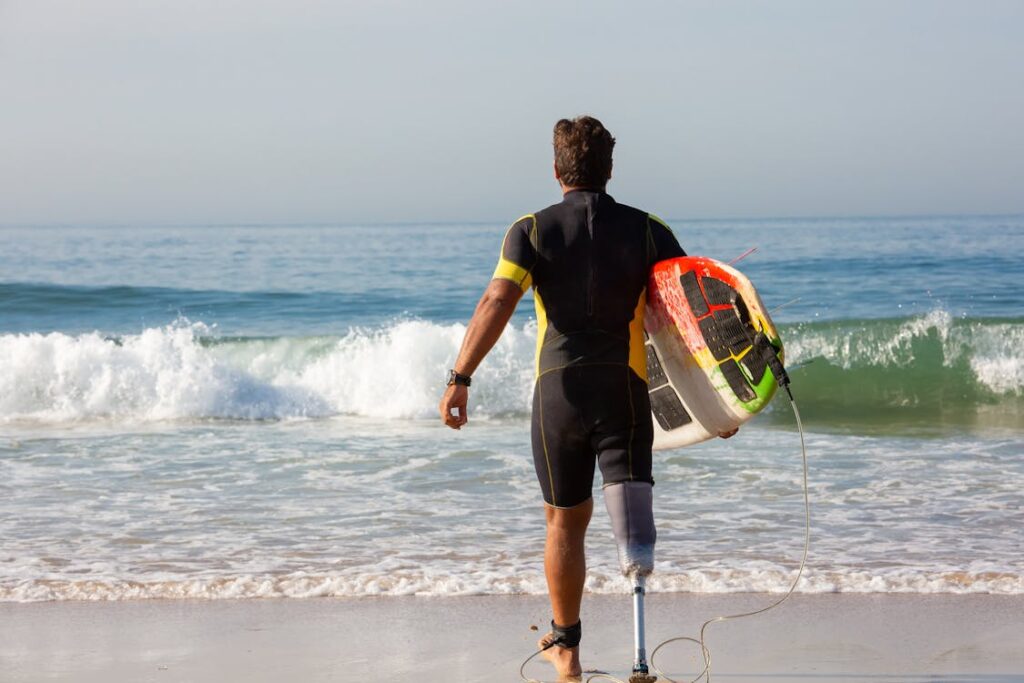
Empowering Families Through Early Progress
How Early Movement Builds Hope, Routine, and Stability at Home
For parents and caregivers, seeing a child lose a limb is one of the most emotional experiences imaginable. There’s grief, confusion, and a deep desire to “get it right” during recovery.
What families often don’t realize is that one of the most powerful tools they have is early prosthetic fitting—not just for the child’s benefit, but for their own emotional wellbeing.
When a child begins moving again with a prosthetic, the entire household starts to shift. There’s less lifting, less dependence, and more room for normal family routines.
The child becomes more involved in daily life—getting dressed, helping in the kitchen, playing with siblings. These small changes have a big emotional impact. They signal that life is moving forward.
Families also find comfort in seeing progress. When a child begins standing, walking, or doing simple tasks independently, it replaces fear with confidence.
Parents start to believe that the future can be okay. That belief creates emotional stability—not just for the parents, but for siblings, grandparents, and everyone who loves the child.
Early fitting also gives families a sense of direction. Instead of waiting passively for healing, they become active participants in recovery. They learn how to care for the prosthesis, how to encourage movement, and how to support therapy.
This involvement strengthens the bond between parent and child. It creates a shared journey, not a one-sided caregiving role.
We’ve also seen how early fitting allows parents to return to work or their regular routines sooner. They no longer need to be full-time caregivers. They regain time, energy, and peace of mind—resources they can then invest into their child’s growth and education.
Another overlooked benefit is emotional modeling. Children pick up on their parents’ emotions. If they sense stress or sadness, they internalize it. But when they see pride, joy, and hope, they reflect that back.
Early prosthetic use sparks those positive emotions in parents, which in turn lifts the child’s emotional resilience.
In short, early fitting helps restore normalcy. It allows families to move out of crisis mode and into a new rhythm of life—a rhythm that includes movement, growth, and joy.
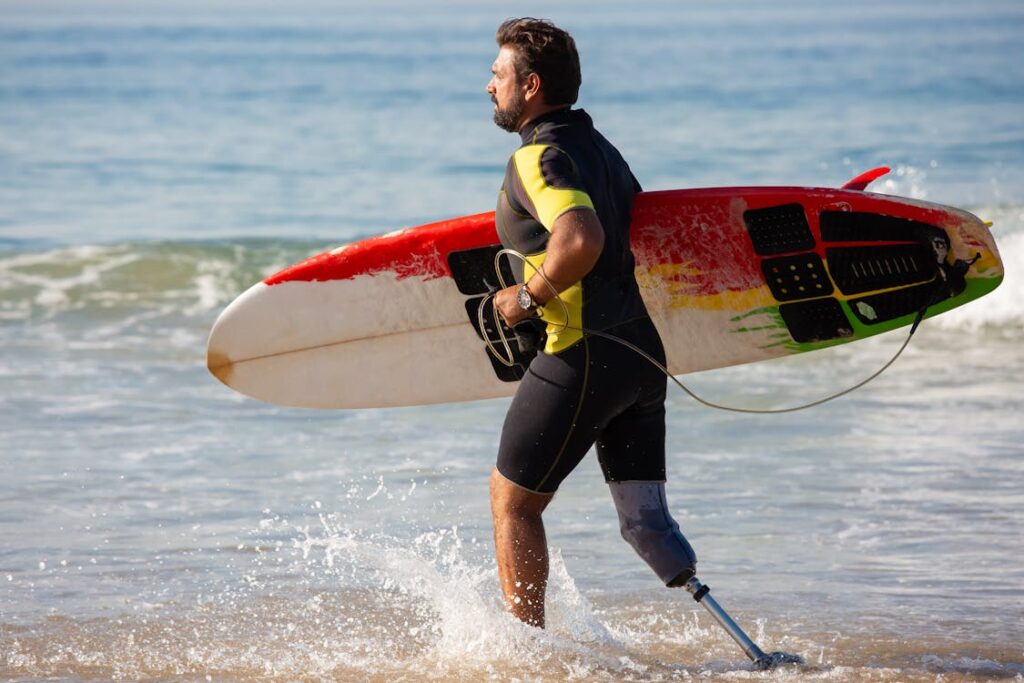
Stories of Strength: Real Children, Real Change
How Early Prosthetic Use Changed Lives Across India
At Robobionics, we’ve been privileged to witness some of the most inspiring recoveries from children who were fitted early. These stories are more than testimonials—they are proof that timely action works.
One young boy from Noida, just five years old, came to us after a traumatic amputation. His parents were worried he would never walk again. Within six weeks, we had him fitted with a preparatory prosthesis.
Within three months, he was walking independently to school and playing football with his friends. Today, he runs, jumps, and even dances—his confidence is off the charts.
Then there’s the story of a girl from Nagpur, born without a full arm. Her parents were initially hesitant about prosthetic use.
But after starting early with a myoelectric arm, she quickly learned to feed herself, write with ease, and participate in all school activities. Today, she mentors other children with limb differences, showing them that nothing is out of reach.
In rural areas where access to rehabilitation is limited, early prosthetic use has helped children stay in school, reduce dependence on others, and avoid preventable complications.
We’ve seen families who once feared the worst now celebrating birthdays, school awards, and big milestones—because they took that first brave step and fitted their child early.
These stories aren’t rare. They’re common when action is taken on time. Children are incredibly adaptable. Give them a chance to move early, and they will rise to the occasion. Their bodies, minds, and spirits will respond in ways that adults often underestimate.
So if you’re wondering whether early fitting is worth it—just look at the children who already did. Their smiles, their strides, and their stories say it all.
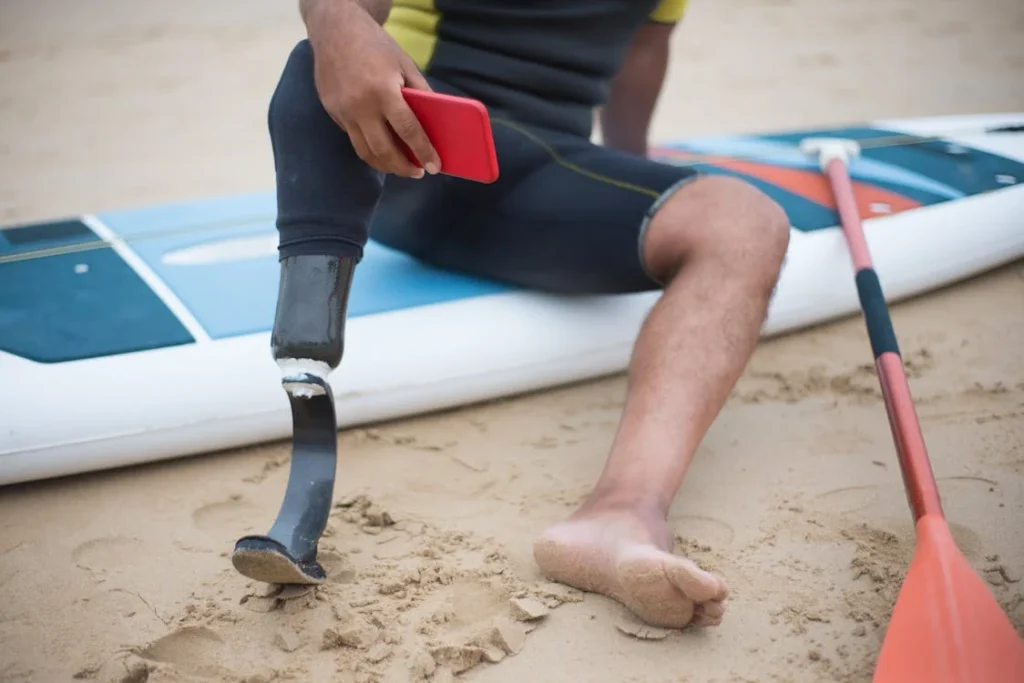
Conclusion
Pediatric amputation is never easy—but it doesn’t have to define a child’s life. With timely prosthetic fitting, the path forward becomes clearer, healthier, and more hopeful. It allows children to grow in balance, move with confidence, and participate in every part of life—at school, at home, and in the world around them.
At Robobionics, we believe early fitting is not just a treatment—it’s a promise. A promise that your child won’t be left behind. That they can stand, move, learn, and thrive. And most of all, that they deserve every opportunity to grow up with the same dreams and possibilities as any other child.
If you’re a parent, doctor, or caregiver wondering when to act—the answer is simple: sooner is better. Not just for mobility, but for growth, confidence, and the beautiful life that lies ahead.



